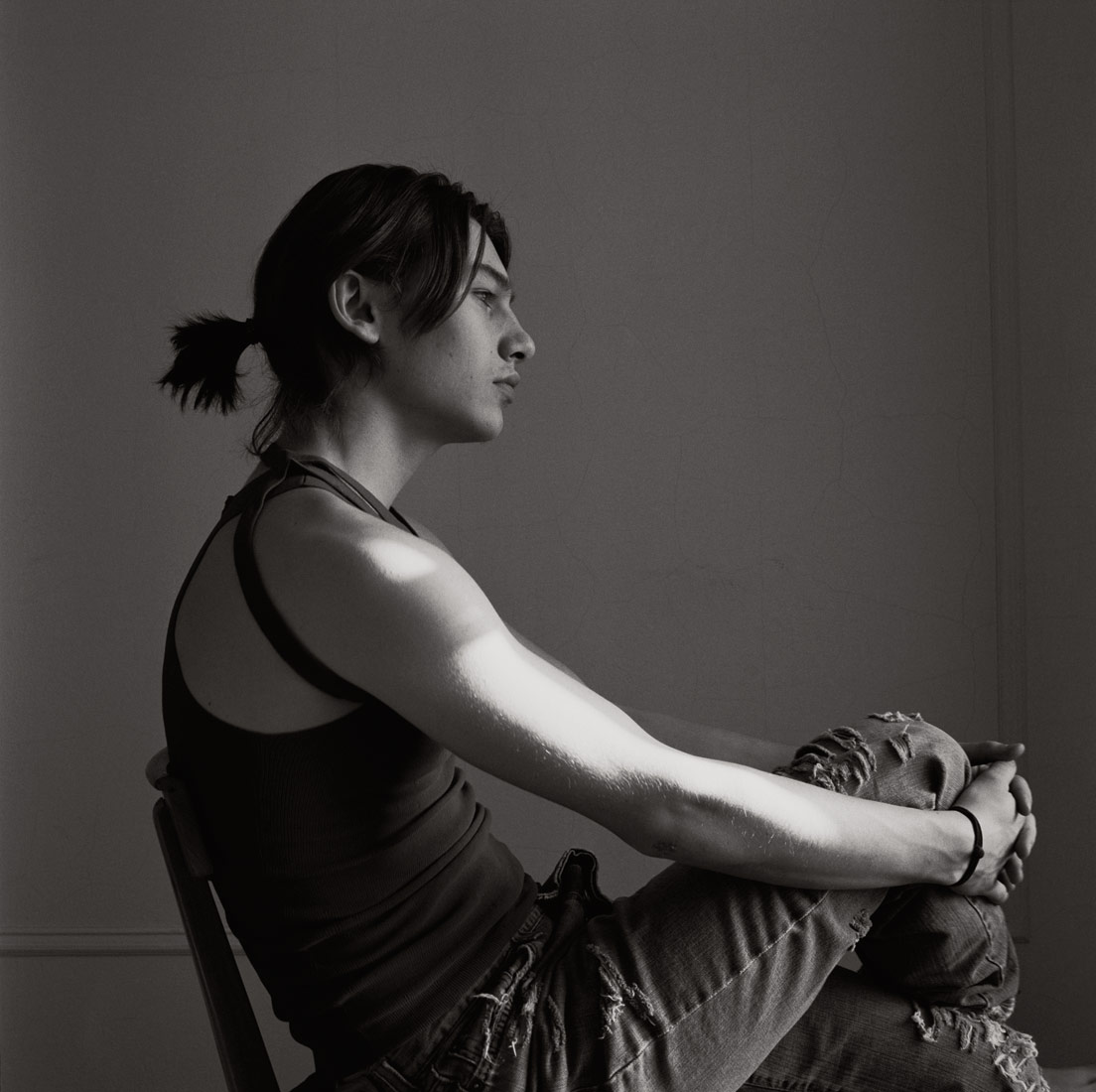It is with a sad heart that we learn the news of photographer David Armstrong’s passing. David was a dear friend of the magazine—he contributed to the very first issue—and he will be greatly missed. I had the good fortune to co-edit and design his book 615 Jefferson Avenue and wanted to share a selection of images from the book, photographed over ten years in his house in Bed-Stuy, Brooklyn, along with a beautiful text by curator Manuel Segade. Segade writes in 615 Jefferson Avenue:
ET IN ARCADIA EGO
The German intellectual and social scientist Walter Benjamin wrote that any product of fashion could be likened to a corpse: its object is a seasonal fruit, ephemeral, with an inescapable expiration date. If a photographic image is an instantaneous statement of something that will not exist the moment after, if it is timely, then fashion photography provokes the highest degree of obsolescence because its object is so precisely assigned to an immediate past. In the context of fashion, the strength—and also the peculiarity—of a David Armstrong image is its capacity to corrupt that trivial quality: through an intense level of iconicity a model is frozen, the fashion fixed together with time, invoking not a past but a continuous present. The image is no longer timely; it is of time.
Armstrong’s great advantage is his sensibility for a genre of beauty identified with an adolescence that is not always representative of mere teenage physicality: his art deals with the capacity of evoking a fragile beauty that can be lost at any time. His photographs, by the effect of light or gesture, reveal a will of non-commital transcendence. That transcendent disposition speaks to the often melancholic nature of photography. But with an intelligent and thoughtful twist, an Armstrong image imposes something far more optimistic: the possibility of redemption by beauty.
Armstrong’s photographs are portraits, and the intense level of attention discloses his methodology: slow, cautious. A model’s form evokes by way of deep, seemingly uncontrolled introspection. The languid rhythm is stressed by the warmth of a light that is absorbed into the body and then released, as if by a bright steam. Eroticism is transferred interpersonally via the atmosphere, by way of sheer compositional control. Beauty is presented as an epiphany, an instantaneous and meaningful signpost in a fragile, unstable combination of elements. It refers to an older tradition: the aesthetic movement of photography from the 19th century that took cues from something more painterly. Julia Margaret Cameron’s flu, the mythical repertoire of Frederick Holland Day, or Wilhelm von Gloeden’s filter of classical antiquity are like a Victorian ghost that takes shelter in Armstrong’s quarters. The act of looking at his images is always closer to a reading than it is a viewing: a void filled with phantoms. His models are interchangeable and at the same time distinctly unique. They contribute to a tradition where the sense of image is more dense, even if that tradition is never directly referenced. Allusion is offered, in the place of analogy, and it is the means by which tradition might or might not travel. This vague past is part of a personal universe, a private encyclopedia where every picture is addendum. Beauty is stored and never taken for granted.
In an essay on photography entitled “Camera Lucida,” the critic Roland Barthes mapped two types of photographic images: those that contend with desire and those that deal with mourning. Similarly, writings from the field of psychoanalysis postulate that the impulses dominating the psyche are eroticism or death. The frozen beauty, the suspension of adolescence in the moment of its blossoming, is, in Armstrong’s photography, an index of a mourning that unfolds. “Every fashion is filled with secret resistances to love,”(1) as Benjamin put it. The pictures included in these pages are apotropaic monuments erected both to serve and defend against desire itself. They aid in the suspension of the possibility that an ideal can ever be met.
The sensibility of the images opens the reading into an exercise of identification that is never with the model, who is unreachable, but rather with the look of the photographer. In a fleeting instant we recognise ourselves in that reciprocal look. We share his desire. And as the images are a sublimation of eroticism, we are made to feel exactly that: regretful at the absence of an admirable beauty established as a prosthetic memory of something we’ve already lost, or maybe that we never had before. Those portraits by Armstrong deal with the myth of Arcadia, and the concept that a utopian ideal only exists as the expression of a primordial hope. Paradise was invented in order to be lost, as an infinite longing.
In a reflected narcissism, the spectator assumes the identity and the mood of the photographer. The admiration of beauty is followed by the recognition of the living creature’s detention—in the case or Armstrong, a type of idealized human taxidermy. With the ghostly quality of the tradition, of a beauty that will fade, of photography itself, everything is carried into a final possibility of desire. The condensation of history is personal history, the sublimation of sex is a sublimation of love, all incarnated by a beautiful man’s body. Just as the heroes in Poussin’s paintings of the same name read the words Et in Arcadia Ego (“Even in Paradise I exist”) on the epitaph of a just-discovered tomb, Armstrong’s pictures are an elegy for the longing of a desire that will never arrive to be fulfilled, but which will simply provoke another. Once and once again.
1. Walter Benjamin, The Arcades Project (Cambridge, Massachussetts: The Belknap Press of Harvard University Press, 1999), p. 64.
David, you will be very dearly missed.


































